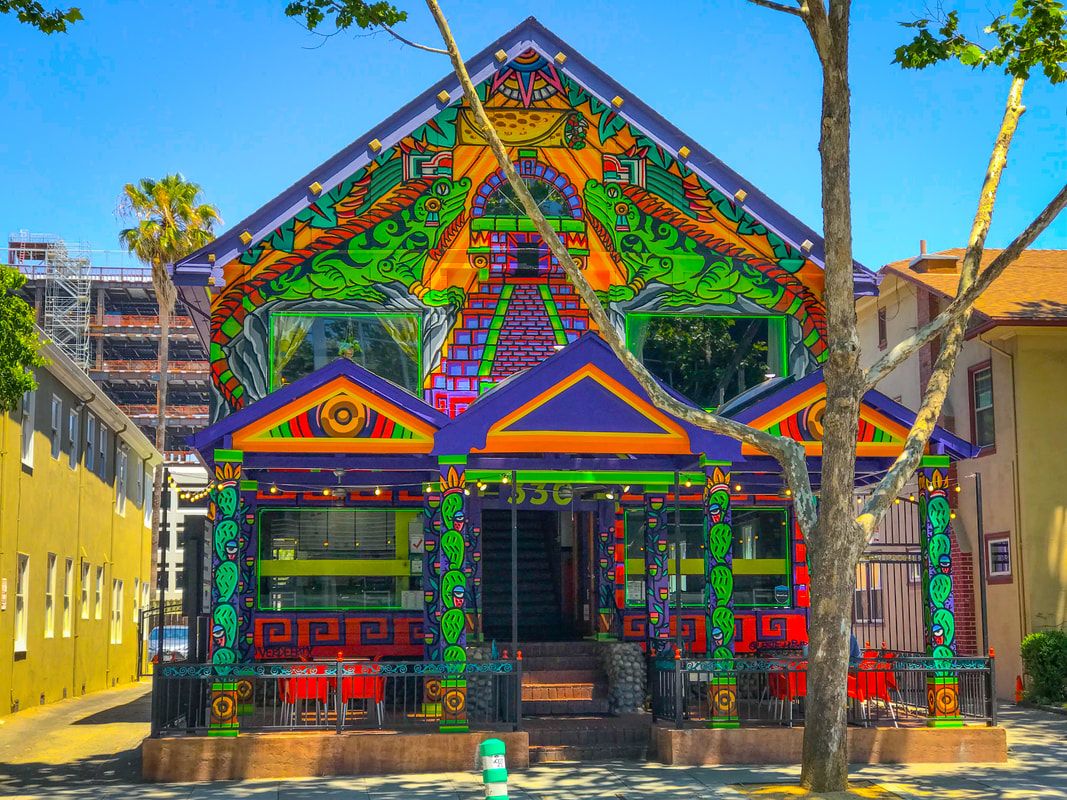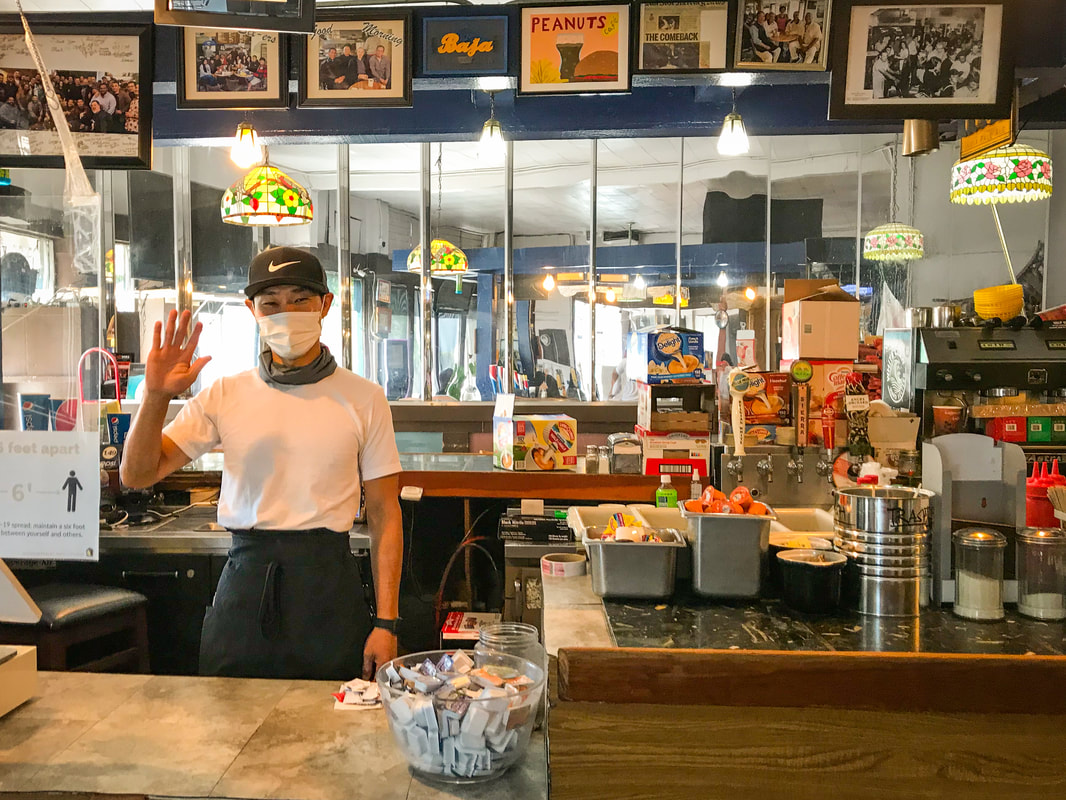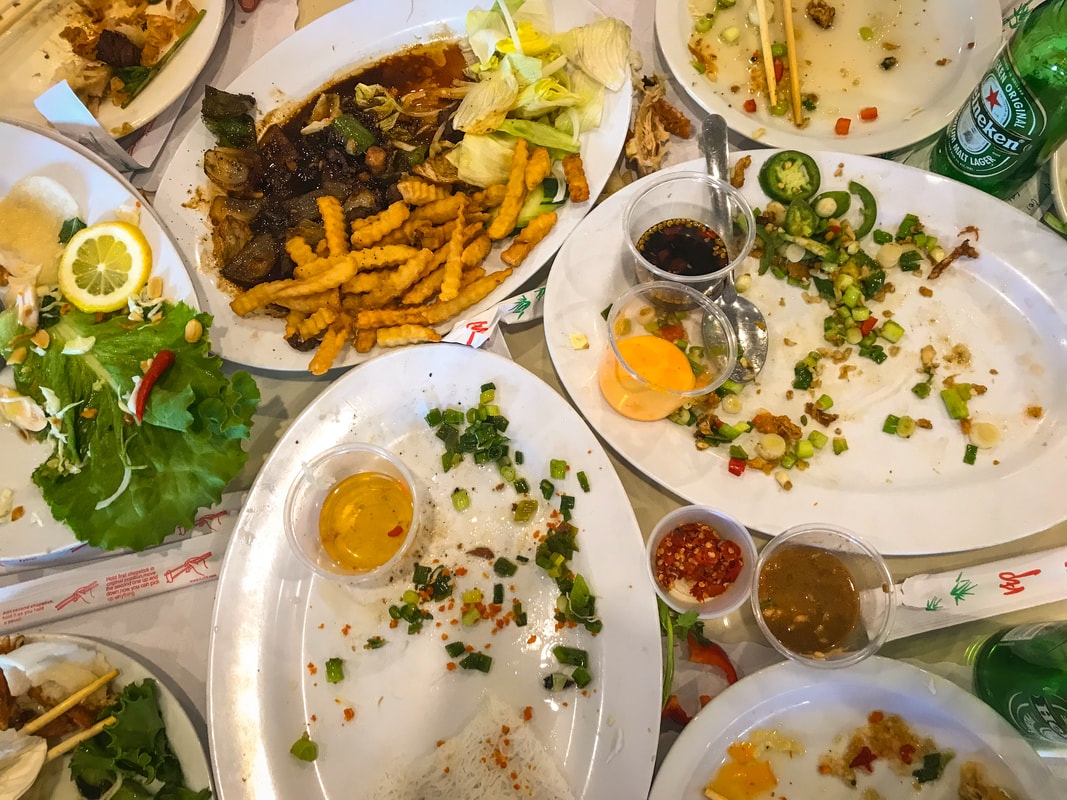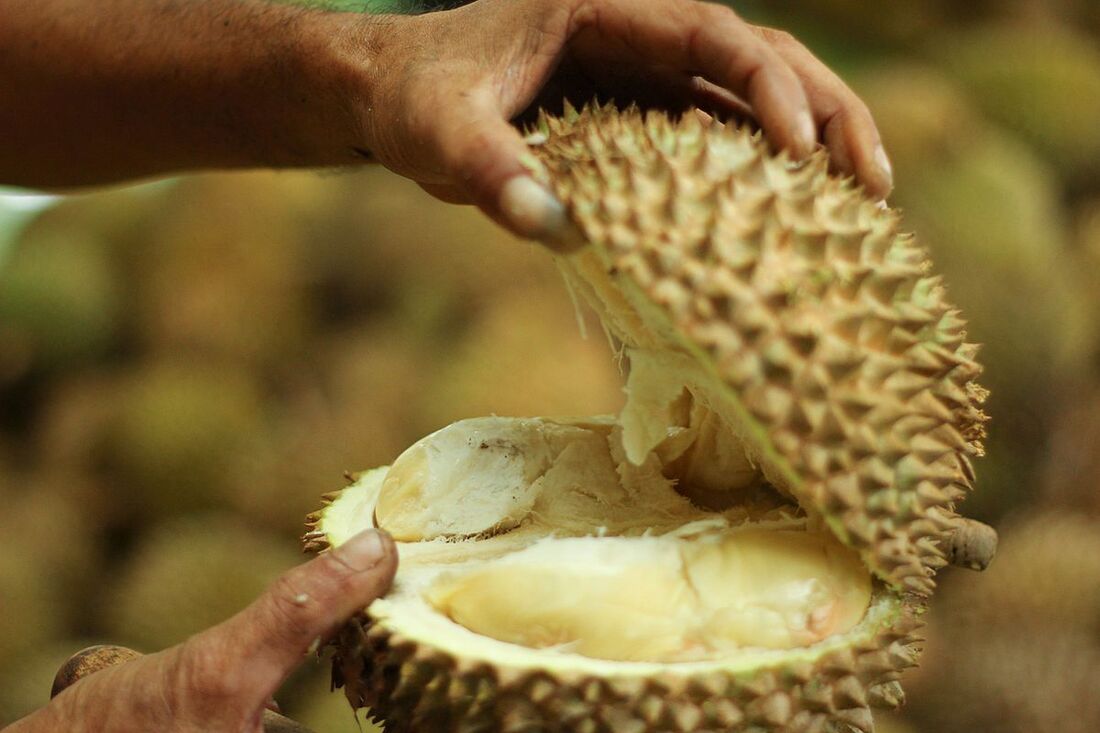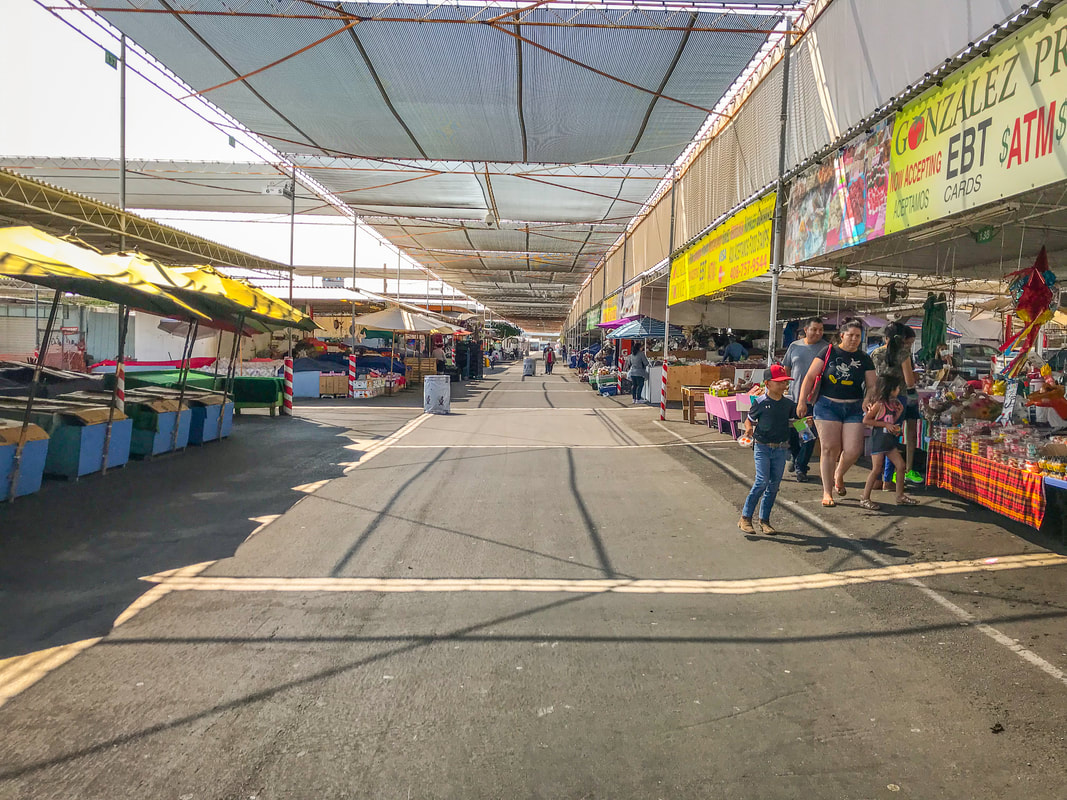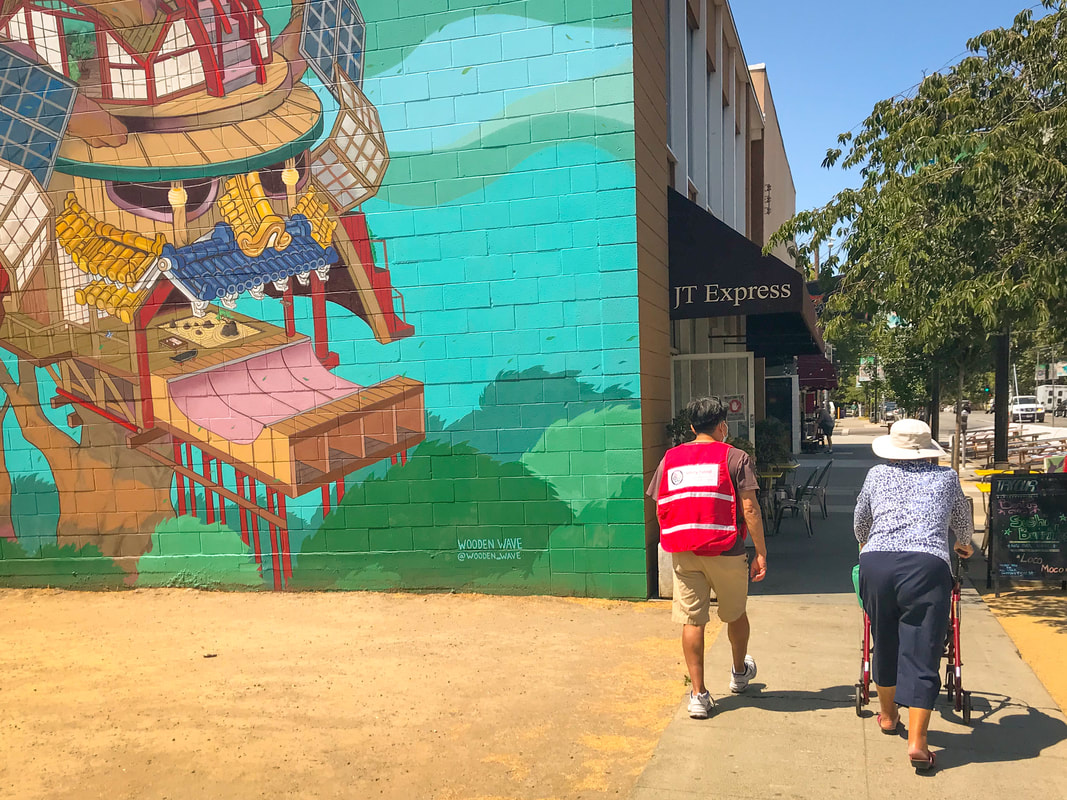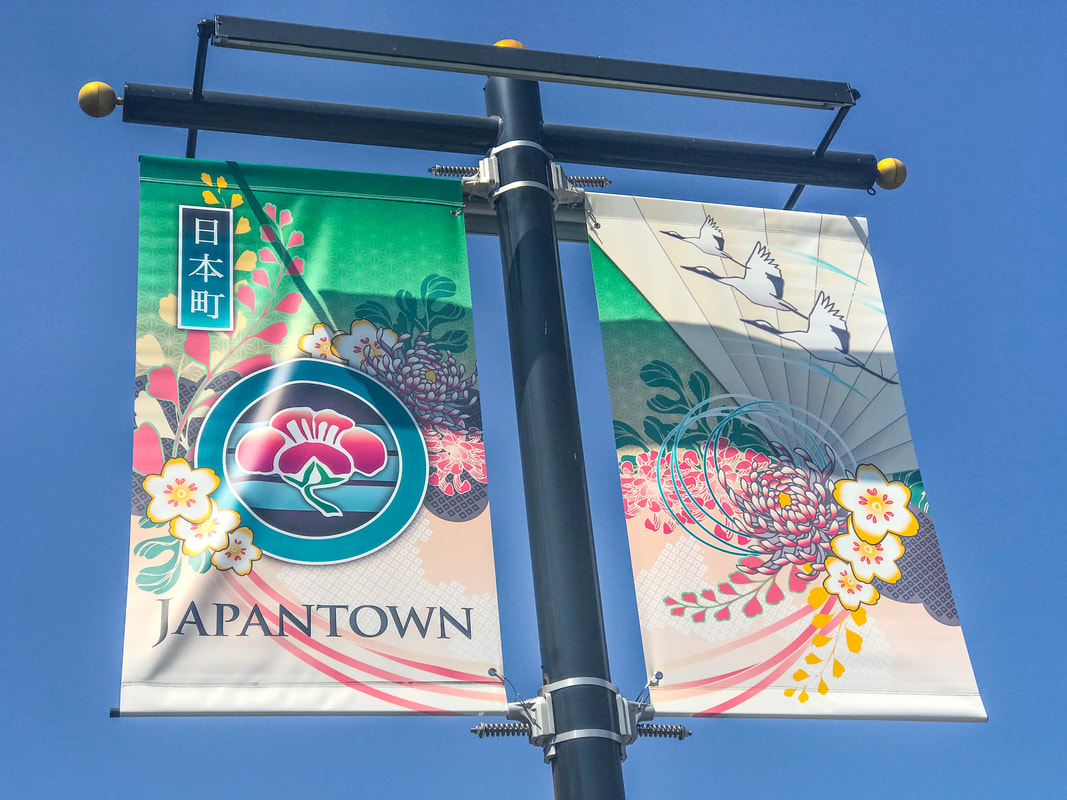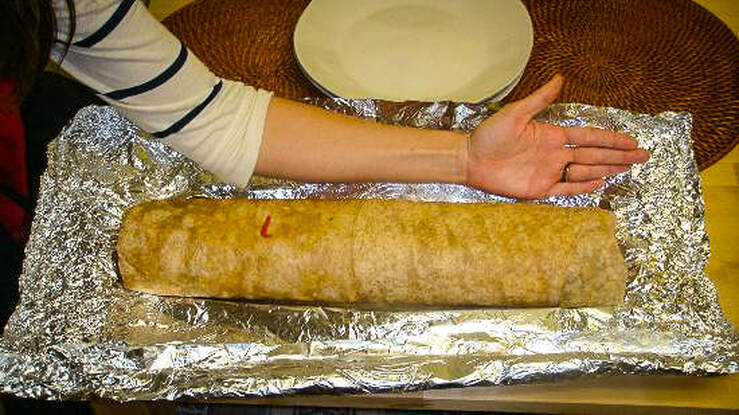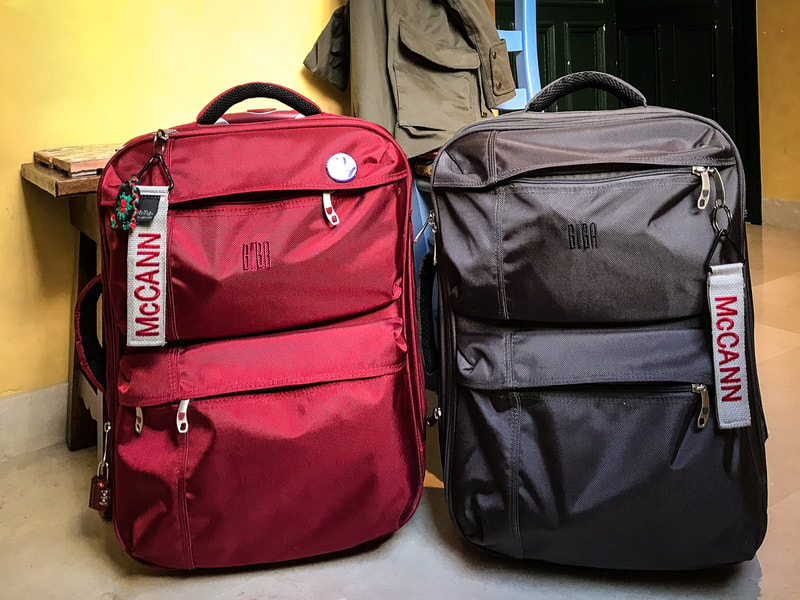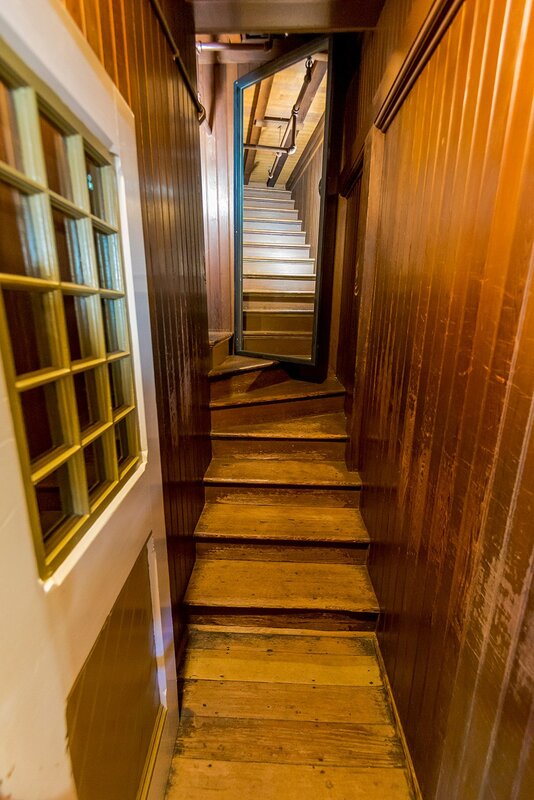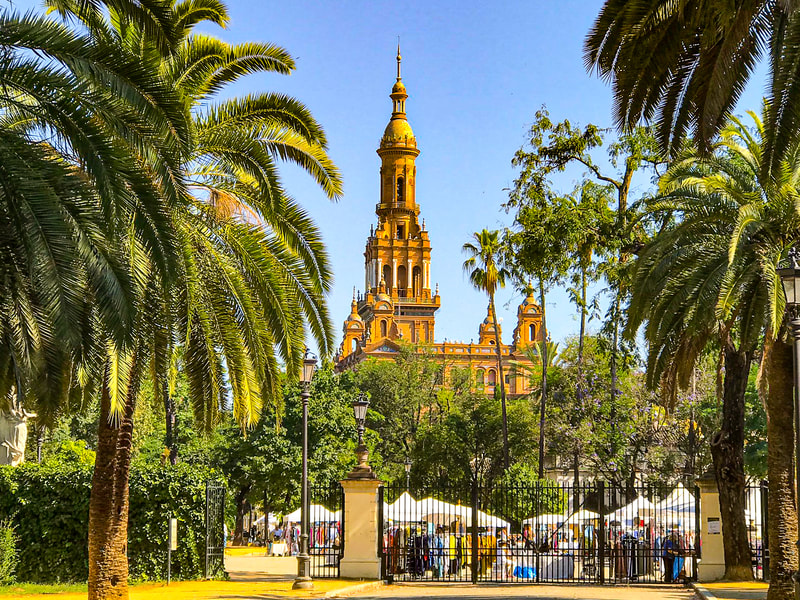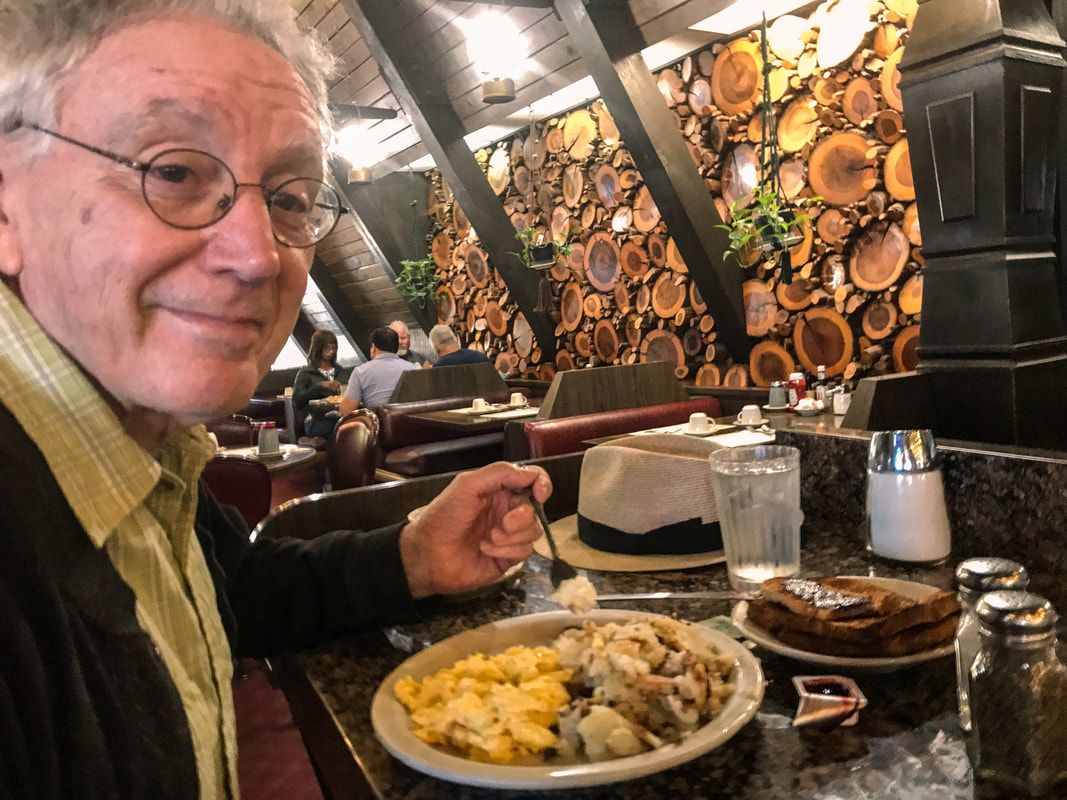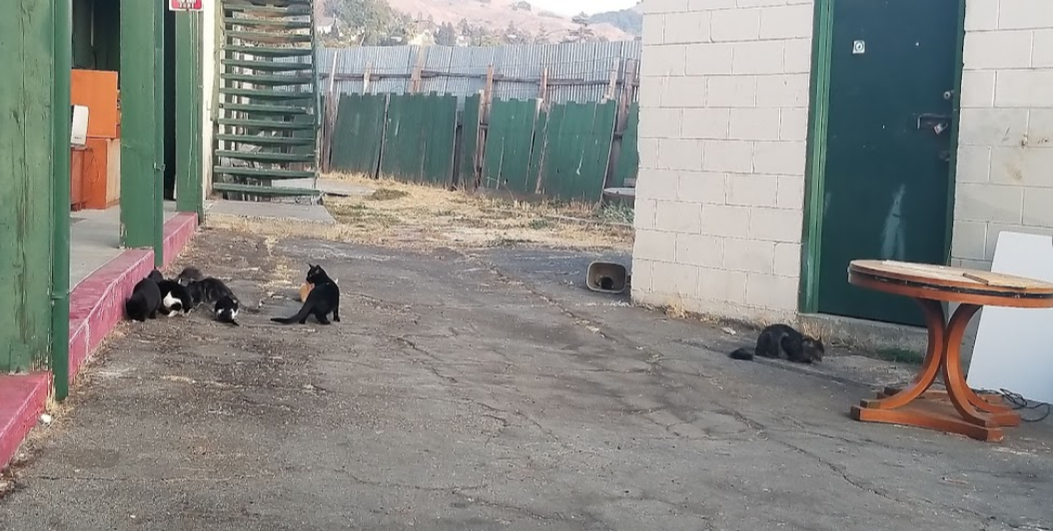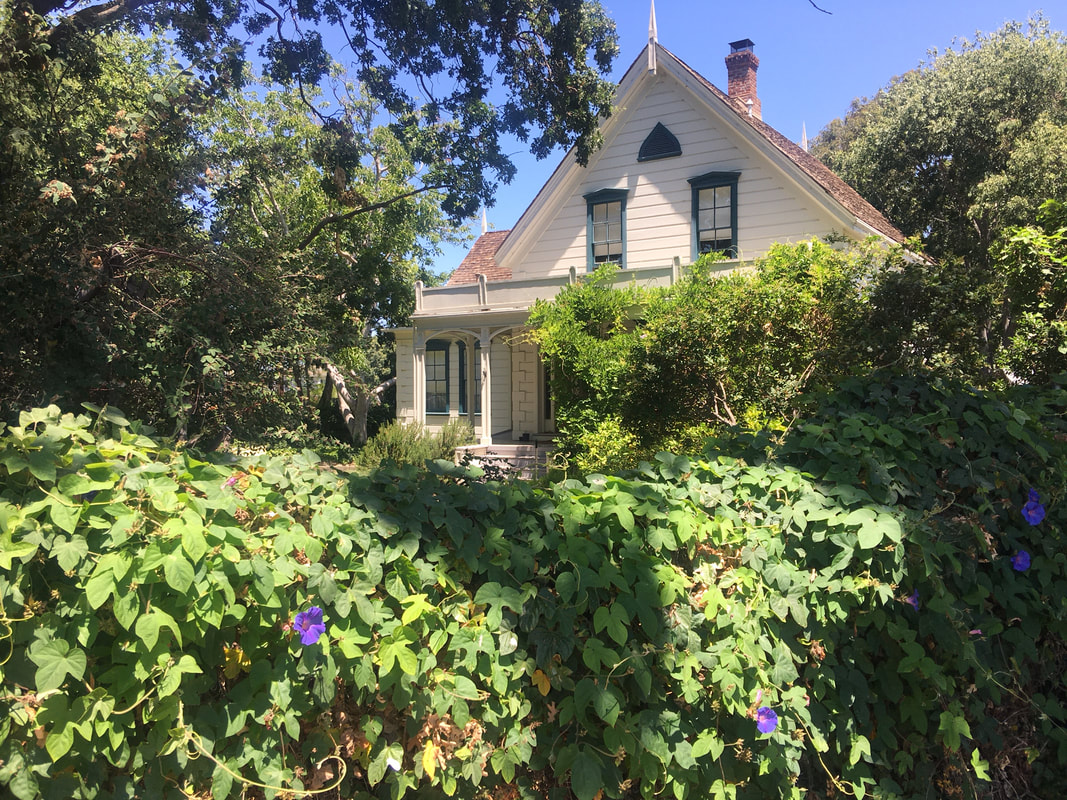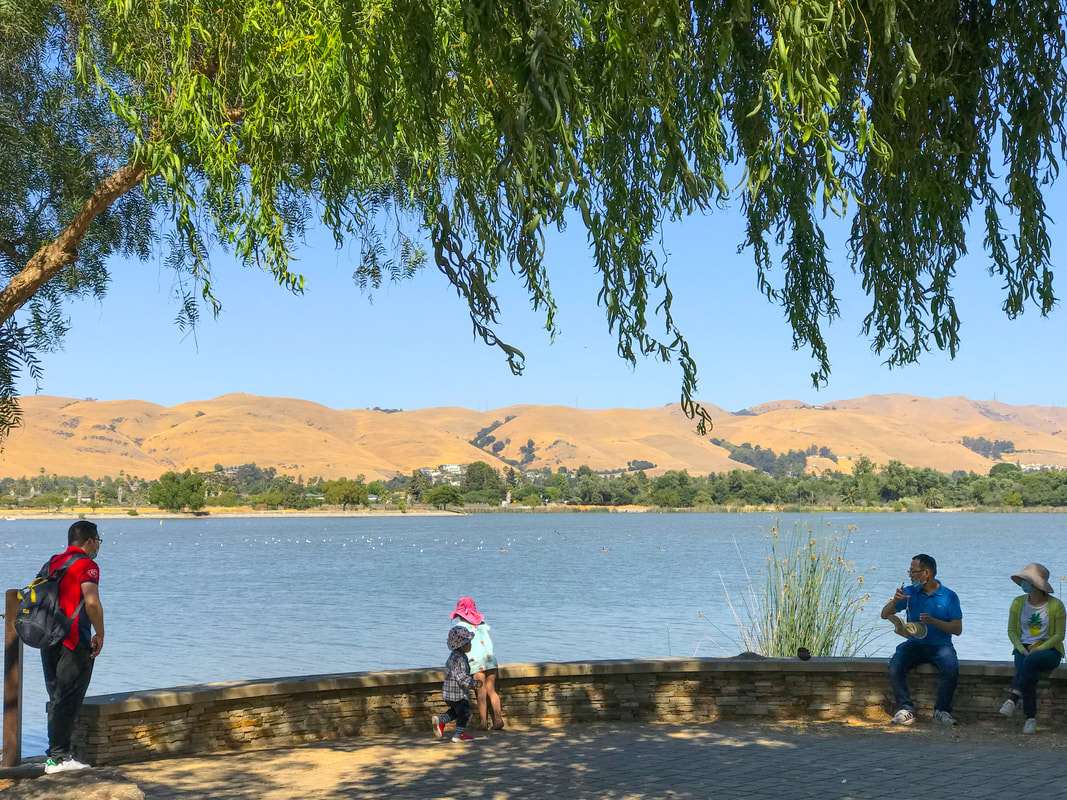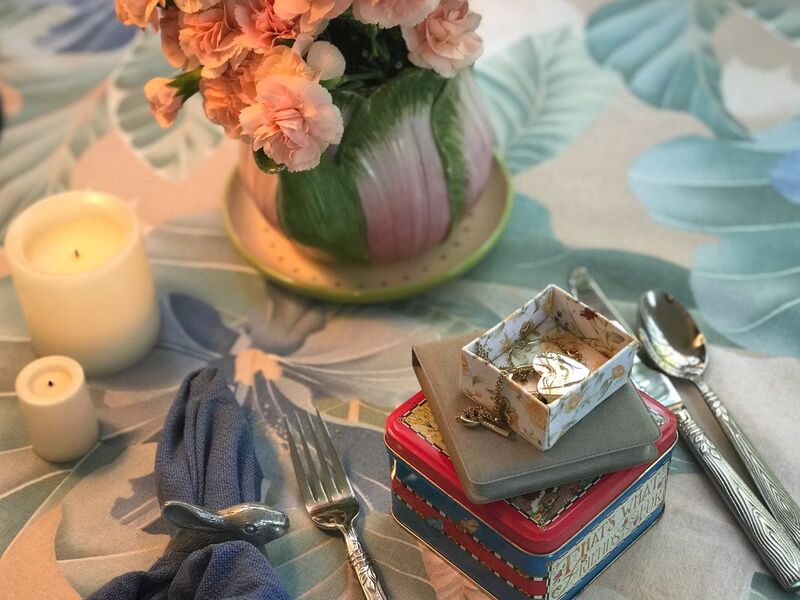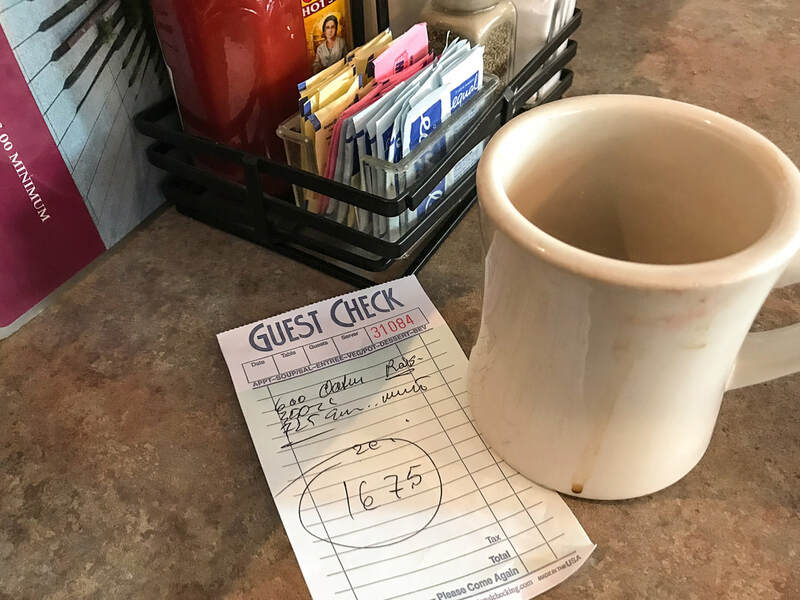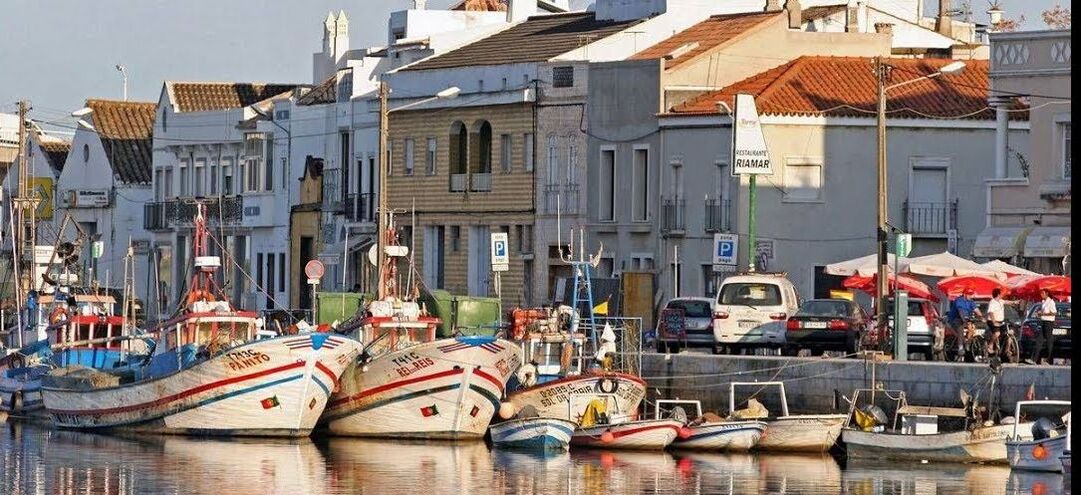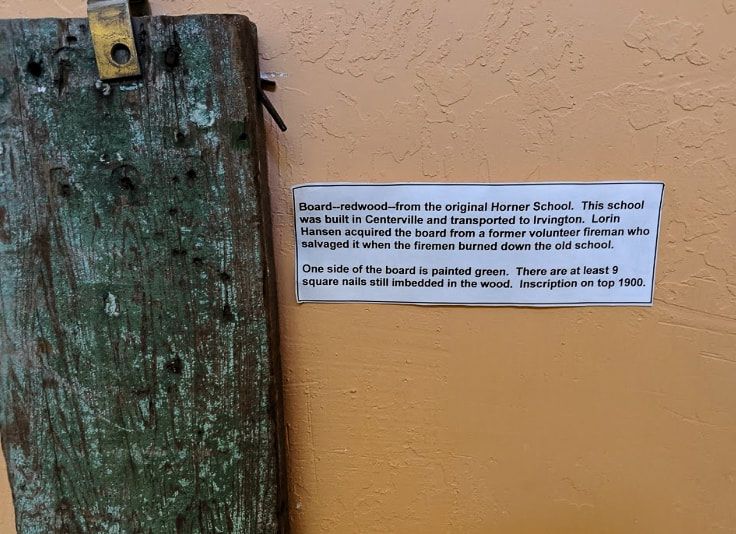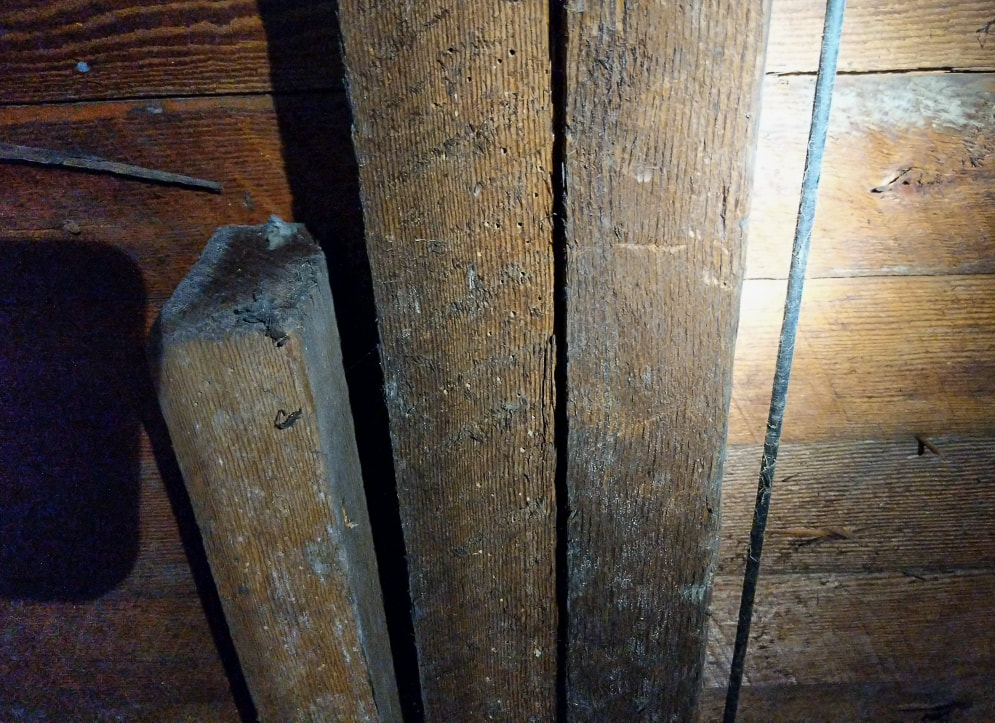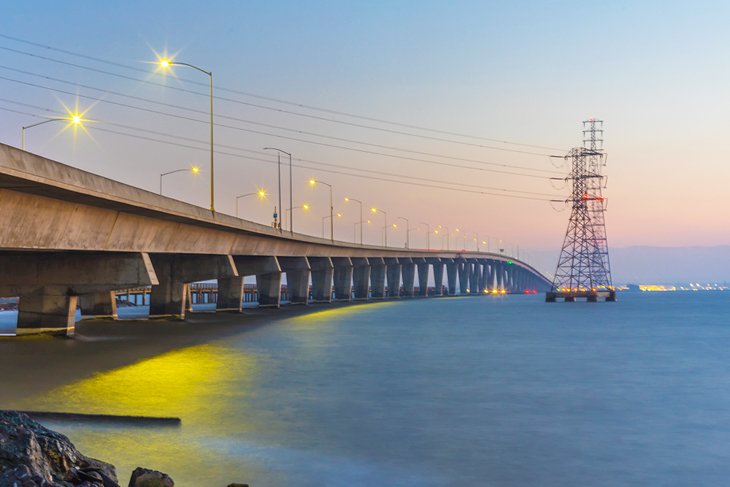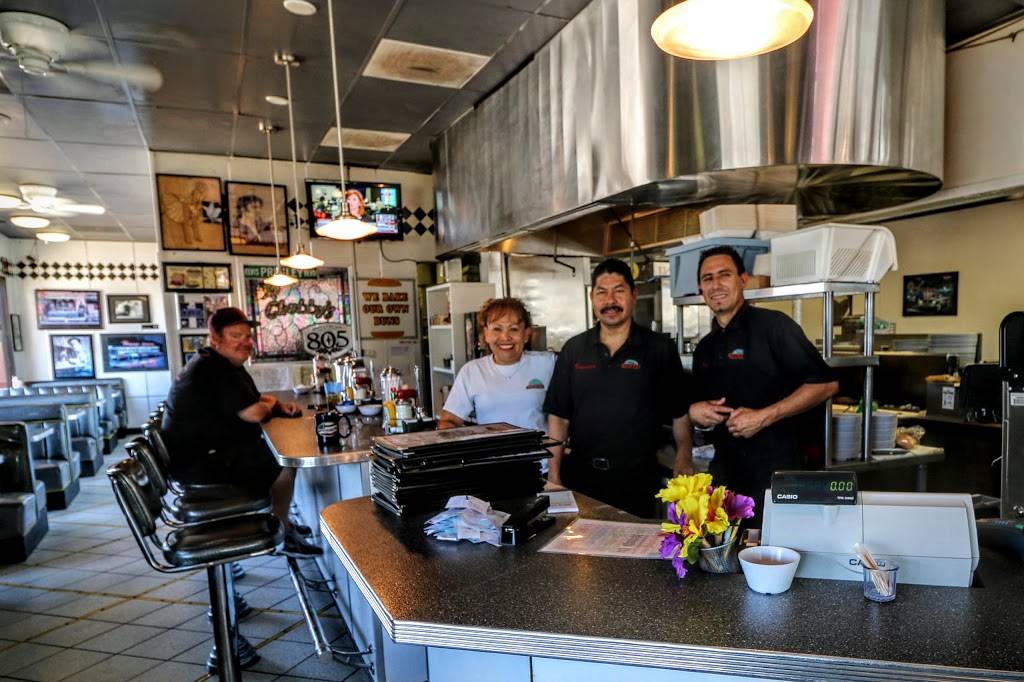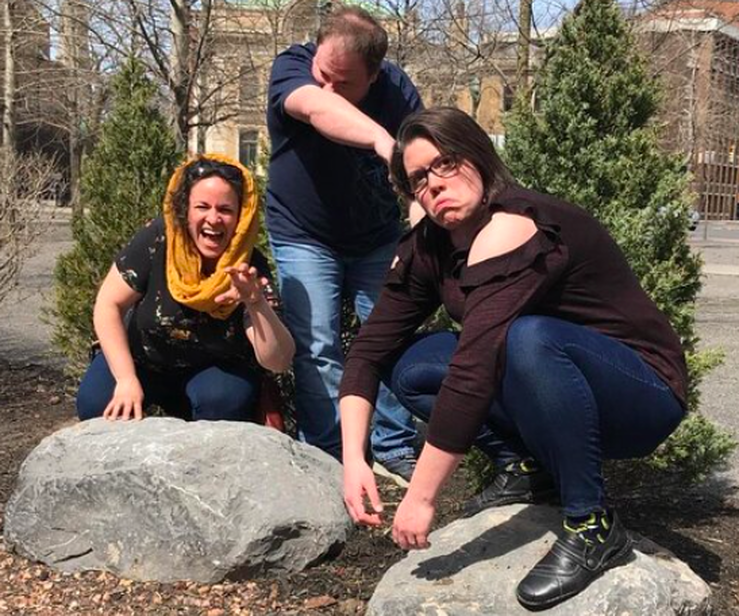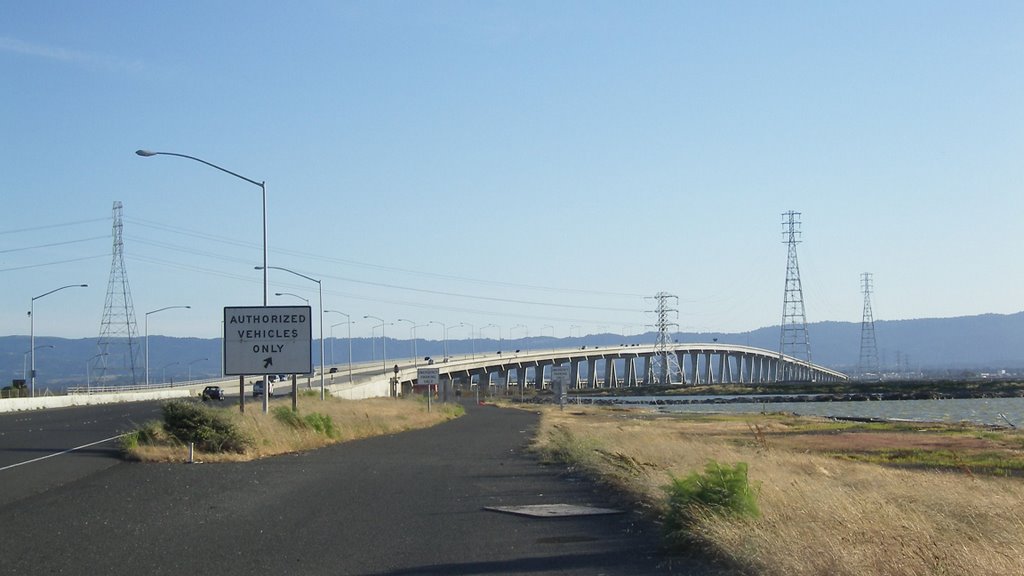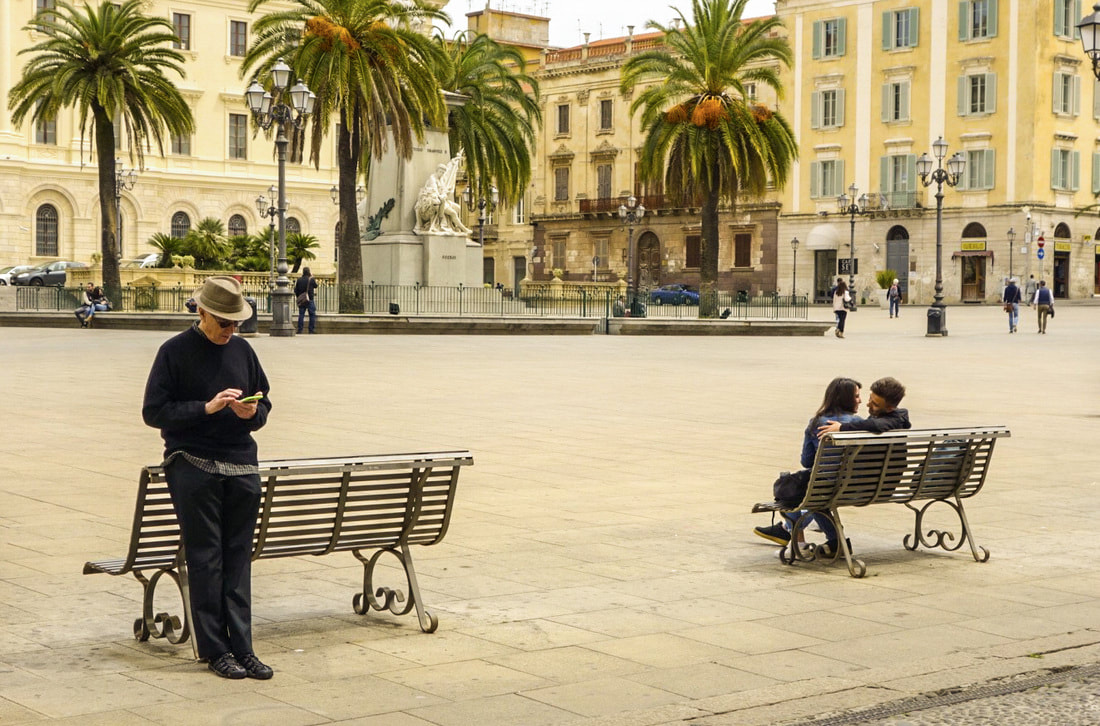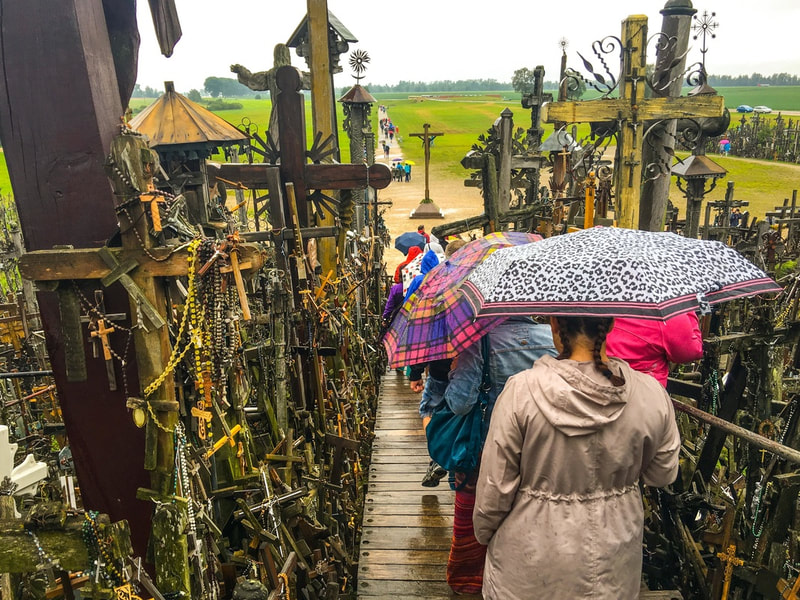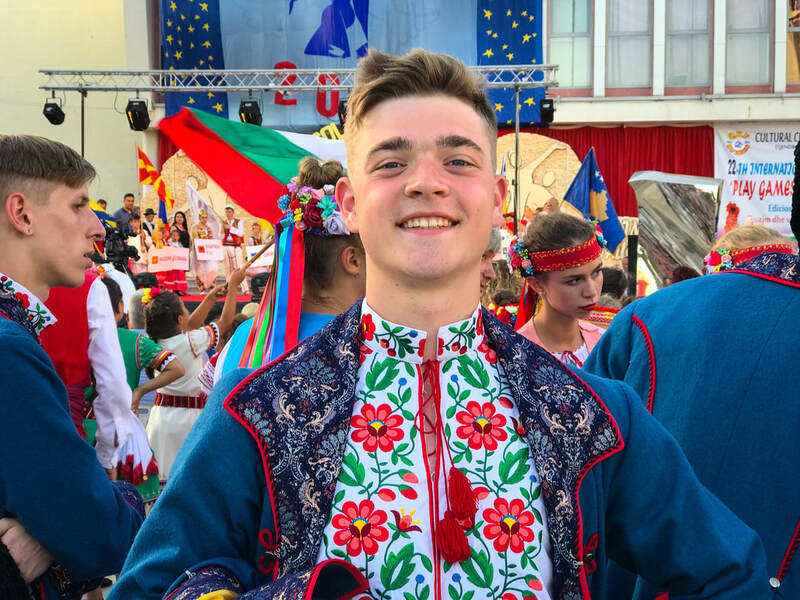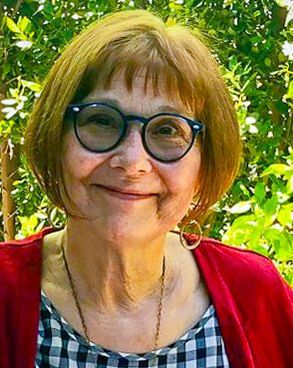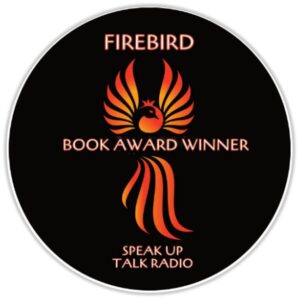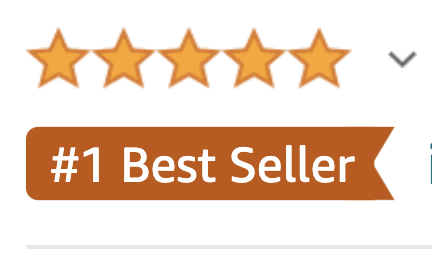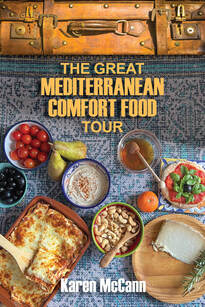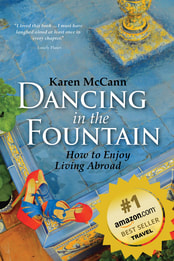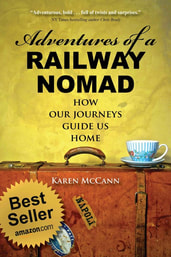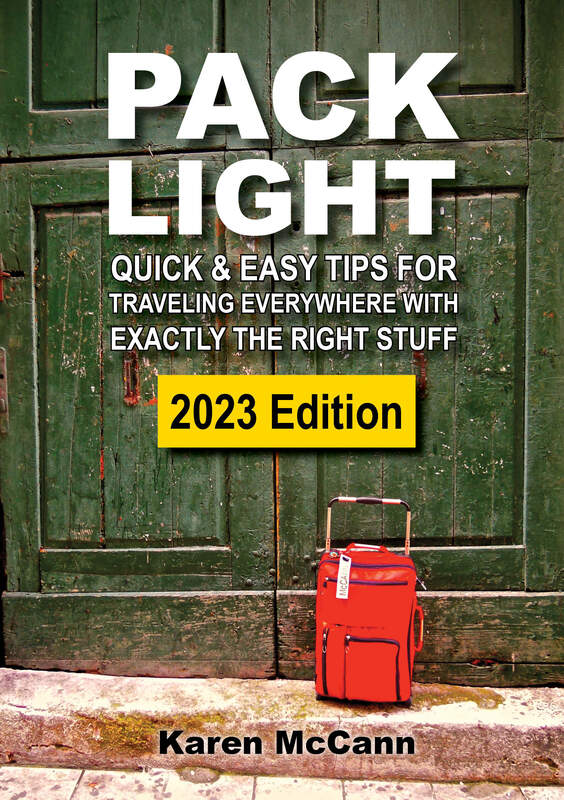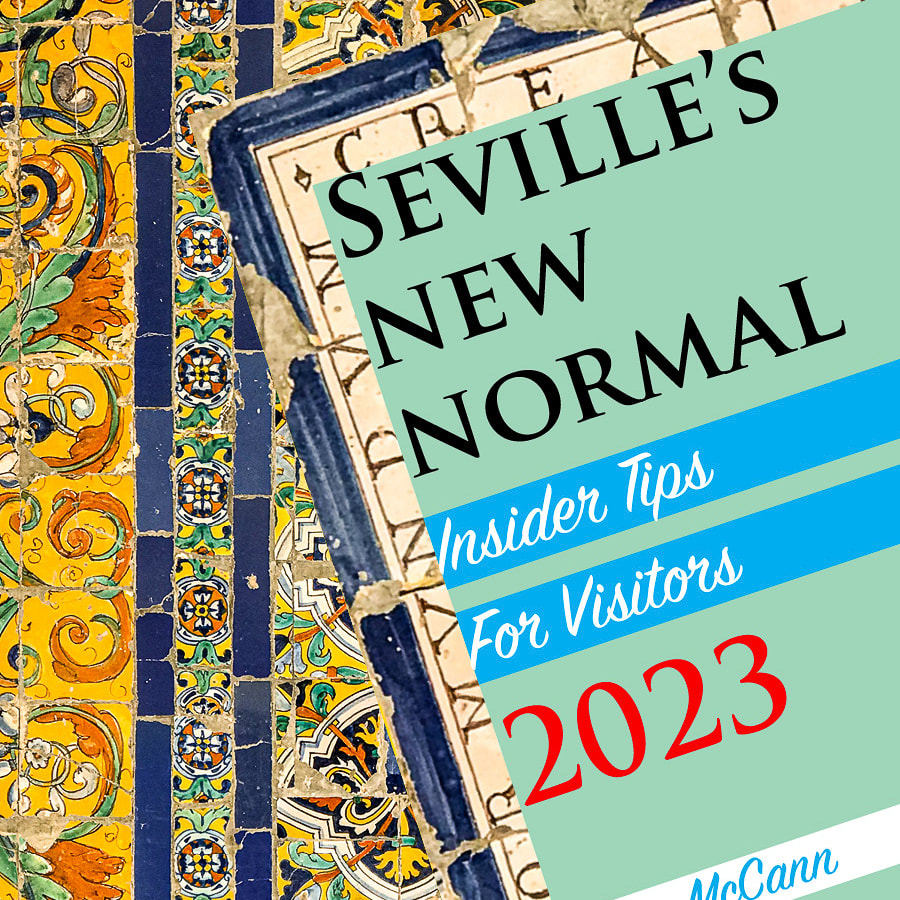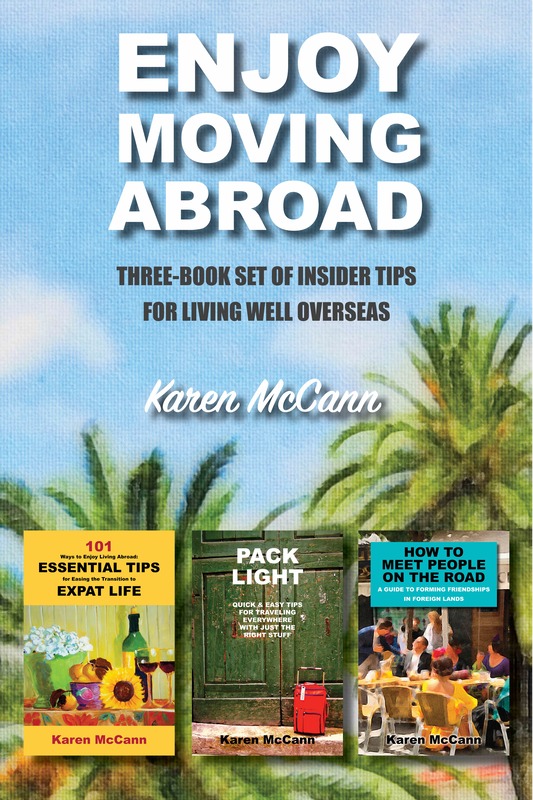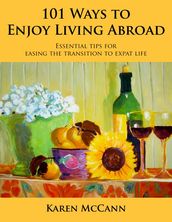|
It took me days to realize what was so weird about downtown San Jose. At first, second, and third glance, it’s a pretty good downtown, with wide avenues, a few solid old buildings, glittering skyscrapers, plenty of housing, and cheerful banners urging the populace to dream and thrive. It’s not breathtaking, like Rome or Bangkok, but as the hub of Silicon Valley, it is one of the wealthiest cities on the planet. San Jose glows with the glossy sheen of new money. It’s not hard to see why it’s rated the fifth happiest city in America. “Well, it certainly didn’t earn that rating through the food,” I grumbled the first night, when Rich and I couldn’t find anything downtown but cookie-cutter food chains and ended up with gloppy pasta and wine that tasted considerably cheaper than its price tag. We had better luck the next morning at Peanuts, an unpretentious café near San Jose State University. Our fellow customers included four uniformed firefighters, a sex worker, three nerdy guys, and two youngsters who clearly had just crawled out of bed after a night of energetic frolicking. It was the kind of place where you help yourself to the coffee, and after my third cup I struck up a conversation with Joseph, who’d taken over Peanuts when his uncle retired. “Happy? Yes, San Jose is a happy city,” Joseph said. “Most people who come in are happy-go-lucky. It’s very diverse. Everyone hangs out with everyone else.” That refrain was repeated in countless conversations over the next few days. San Jose is rated the most diverse city in America and my own unscientific, statistically insignificant, random observations agreed. Nearly 400,000 people from around the world have been drawn there by tech companies such as Zoom, Adobe, eBay, PayPal, and Google — which is building a new downtown campus with 7.3 million square feet of office space, 4,000 housing units, and 15 acres of parkland. Are diversity and jobs enough to make this town soar high on the happiness charts? The cost of living is more than double the national average, and the $1 million median home price is twice California’s average, four times America’s. True, San Jose enjoys superlative weather, but if we’ve learned anything from the Nordic countries’ high rankings on the happiness index, weather doesn’t count for much. Then it hit me: maybe San Jose wasn’t happier than other cities — maybe it just thought it was. Long ago I’d worked at the information desk in UC Berkeley’s student union and asked hundreds of people where they were from and if they liked it. The only ones who waxed enthusiastic about their home town? Bostonians. Now, Boston’s a great town; I know, because I moved there for ten years. But Boston isn’t the only decent place to live in the USA; it just happens to have a culture that constantly reinforces the idea it’s the greatest. Seville has the same collective narrative, as do many New Yorkers. Apparently San Jose has that attitude, too. And as we all know, attitude counts. Rich and I were discussing all this at a cantina with plenty of attitude: Iguanas, home to the famous Burritozilla — a five pound, eighteen-inch “hunger killer” burrito. Eating a whole one earns you a free t-shirt — and lifetime’s bragging rights. “Does anyone really order that?” I asked the Louis, the cook. He grinned. “Yep. One woman ate it in a minute thirty-two seconds. Her name is Molly. Look her up on YouTube.” Wow, that woman can eat! I’m no Molly, but I did my best to consume my share of San Jose’s Caribbean, Greek, Portuguese, French, Mexican, and Vietnamese fare. At the popular Nha Trang, our friend Joe showed off his fluent Vietnamese ordering an insane number of dishes — which we heroically managed to finish. All this time, I kept trying to figure out what was bugging me about San Jose’s downtown. When it finally came to me, I was shocked and aghast. “Hey, there’s no retail around here. We haven’t seen a single clothing store, bookshop, sporting goods place, or food market anywhere downtown. Does everyone do all their shopping online? Even groceries? Is retail really dead? Say it ain’t so!” We decided to find out. First we hit Little Saigon’s Grand Century Mall, where a marble statue of 13th century Vietnamese naval hero Tran Hung Dao presides over shops selling art, trinkets, and cosmetics. As we approached a small grocery store at the back, my nose began to wrinkle. “What’s that hideous smell? Decaying chicken? Rotting garbage?” “No, durian.” Rich had told me about Asia’s beloved yet stinky fruit, but now I realize that’s like talking about the scent of skunk; you can’t really appreciate it until you smell it for yourself. Yowzer! They say it tastes like almond custard, but I don’t care; I have added “avoiding durian” to my lifetime goals list. Next we visited the Barryessa Flea Market, said to be a vast treasure trove with a farmer’s market and a carousel. Sadly, on the weekday we visited, it was a ghost town, with a few dispirited vendors listlessly eyeing the handful of customers drifting down the aisles. “They just put in a BART station,” Rich explained. “The family that’s owned this property since the 1960s sold the land to real estate developers. The flea market is shrinking from sixty acres to five.” “I feel like I’m presiding over a funeral on the Titanic. Where else can we try?” We considered Santana Row, said to have all the high-end shops we’d find in other cities, but instead, we went to check out Nihonmachi (Japantown). And here’s where I really fell in love with San Jose. For a start, there was actual retail — not much, and mostly closed because of Covid, but still, you could actually go into some buildings and purchase things, just like you used to do in the old days before Amazon ruled the earth. There was an atmosphere of cheerful bustle and plenty of colorful street art. One poster read: “Stop Asian hate. Protect the elderly.” I noticed an older woman with a shopping bag pushing a walker down the street, chatting companionably with a young man in a vest marked “Safety Patrol.” He was part of a volunteer group protecting vulnerable residents while they go about their errands. Seeing this in action was heartwarming. Knowing why it was needed? Heartbreaking indeed. A century ago, San Jose was nicknamed “the valley of heart’s delight” for its bountiful crops and the entrepreneurial attitude that gave the world its first radio station, first computer hard drive, and first Grateful Dead performance. Today people still arrive there from all corners of the earth seeking their heart’s delight: the chance to create technology that will reshape the future. “Two million people live in Silicon Valley,” said journalist Ben Smith, “and one million of them believe they've discovered the next big thing.” Perhaps that’s what makes San Jose so happy — it’s a place that encourages you to dream big, even if it’s only about your chances of someday consuming an entire burritozilla. Wondering how 182 US cities were chosen and rated for happiness? See the methodology here. About to write and ask me why I didn't visit San Jose's most famous landmark, the Winchester Mystery House? We went a few years ago on Our Magical Mystery Tour of California's Roadside Attractions. YOU MIGHT ALSO ENJOY CLICK HERE
to sign up for my weekly travel tips and commentary about life, road trips, and happiness. FEEL FREE TO SHARE this article with family, friends, colleagues, and anyone who is curious about whether the road to happiness lies through Silicon Valley. https://www.enjoylivingabroad.com/my-blog/an-joe-no-money-cant-buy-happiness-but
43 Comments
“No hotels?” I said. “You’re saying Fremont, California — a city of 240,000 people — doesn’t have a single hotel?” “Yep.” Rich was struggling to find us lodgings in the metropolis rated "the happiest city in America" by a recent poll. “The closest hotels are outside the city limits in nearby Newark.” Eventually we found one place listed in Fremont: the All-Suites Islander Motel. A glance at their Yelp page was an eye-opener. “Worst place I ever stayed rather sleep in my car than here ever again. The carpet was dirty dog pee stains every where smelled like a boys locker room mixed with dog. Cockroaches everywhere beds old out dated, super uncomfortable bedding and linen dirty. Worst place ever. Trap house! Stay away, unless u want to bring home roaches and bed bugs.” One guest wrote, “Helpful hint #1 carry some sort of weapon if you decide to venture out for a late night ice run.” Good to know! We stayed at a cookie-cutter corporate hotel in Newark. Bright and early on our first Fremont morning, we stopped at the Country Way diner and found bottomless cups of coffee and a hostess who called Rich “hon." Our waitress, Cindy, hadn’t heard about the poll but didn’t seem surprised at Fremont’s happiness rating. “We have good neighborhoods, good weather, it’s clean, good for kids, and it’s safe.” What’s not to like? To walk off the eggs and home fries, we strolled down Fremont Boulevard, a broad thoroughfare lined with diners and store fronts — about the closest thing this centerless city has to a downtown. Passing the old railway station, Uncle Joe’s Liquors, an Afghan market, and an Indian wedding photographer, we fetched up at the Holy Spirit Catholic church. On a Sunday morning we were surprised to find the 1886 landmark church locked. Wandering around to the back we discovered 200 people attending an open air mass. “Do you smell that?” Rich whispered. My nose stuffy with allergies, I didn’t at first. “What, incense?” “No. Barbecue!” We slipped away from the service and followed our sniffers around the parish hall to find The Holy Spirit Filipino Society making pancit bihon (stir-fried rice noodles), lumpia (spring rolls), and sweet-salty grilled chicken (recipes below). It was too soon after the hash browns to think of lunch, but we chatted with the cooks, who laughingly agreed Fremont was a happy place to live and invited us to return later. We did and it was the best food of the entire trip — and quite a bargain at $5 for a shared meal. I wasn’t quite sure what to expect on our next stop, The Museum of Local History, but I soon discovered it was a sweet treasure trove, lovingly assembled and carefully labeled by countless volunteers over the past 60+ years. I marveled at the bones of a mastodon discovered by the Boy Paleontologists in the 1940s. An old movie camera paid tribute to the days when Charlie Chaplin made 14 films there, including The Tramp. It was a bit disconcerting to discover many objects — dial telephones, adding machines, floppy-disc computers — I’d once owned myself. I felt like a relic! Our guide, Stuart, "really knew his onions," as they said back in the 1920s. I asked him about the Harvey Ranch, which my friend Bill wrote about in a comment on my last post. “In 1970 I met Margo Harvey, a lovely lady and big time farmer whose vegetable crops were planted on 100s of acres in Fremont. She told me about how Fremont also had the best vegetable stand run by a sweet old fellow right at the edge of her property. After buying from him, every day, for over 20 years, one morning, at 4am, she discovered him picking all his produce from her fields. When confronted by her, he acknowledged he had been doing this all his life and had no inventory cost. She wasn't sure whether to laugh or cry.” Stuart knew all about the Harvey house, which is still standing in what's now Harvey Community Park. Rich and I arrived there to find young Asian men playing cricket in the field where the sweet old fellow used to steal Margo’s produce. The rest of Harvey Farm is suburban housing. Wherever we went in the city, we asked everybody we encountered whether they agreed Fremont was a particularly happy city. Every single one of them said yes — until we stopped for frozen custard at Rita’s. “I hate this place,” a woman in the parking lot snarled. “I can’t wait to get out of here.” Stunned at her vehemence, Rich naturally wondered if she was staying at the All-Suites Islander Motel. “Are you from out of town?” he asked. “I’m from Monterey. I’ve never been here before; I’m just passing through. I’ve been here ten minutes and I’m ready to leave.” Rich did not stand in her way. Our last stop was the 450-acre Fremont Central Park, built around the lovely Lake Elizabeth. “Online someone called it ‘Lake Liz.’ Is that a common nickname?” I asked my sister-in-law Deb, who once worked in Fremont. “I’ve only been there a few times,” she said. “I wouldn’t presume to call her that on such a brief acquaintance.” Of course, it's not all sweetness and light, even here in the happiest city's prettiest park. A display about earthquakes reminds us just how unstable life can be, a point that's underscored by the homeless encampments nearby and the parched earth of California's long drought. I sat at a picnic table looking out over the tranquil water of Lake Elizabeth, surrounded by local families who, at a guess, could trace their ancestry back to just about every corner of Asia, Central and South America, Europe, the Caribbean, and beyond. Everyone seemed to be enjoying themselves, handing around Tupperware containers of food, tossing balls for dogs, bouncing babies on their knees. And I began to see why this place was considered so happy. Fremont, stitched together out of several older towns, seemed devoted to one modest goal: being a family-friendly community for people far from home. It doesn’t strive for glamour or hipster chic, attempt to lure tourists away from San Francisco, or harbor dreams of becoming the next Silicon Valley. I’ve read that modest expectations are one reason for the high happiness ratings of Nordic countries. Where Americans are constantly exhorted to strive for exceptional achievements and be dissatisfied with anything less, the Scandinavians’ goal is a comfortable work-life balance. They just want to come home at the end of the day feeling satisfied with what they have. Perhaps that’s what Fremont offers its citizens. No wonder they’re happy. So what was the ghastly All-Suites Islander doing in the midst of so much contentment? Re-checking Yelp, I discovered the Islander isn’t technically in Fremont but in neighboring Hayward. Whew! Fremont can hold up its head again. Clearly there’s no perfect way to quantify happiness; no doubt other cities deserve the crown as much or more. But all in all, I’d say Fremont is doing OK. And in these troubled times, meeting even that modest expectation makes the city truly exceptional. 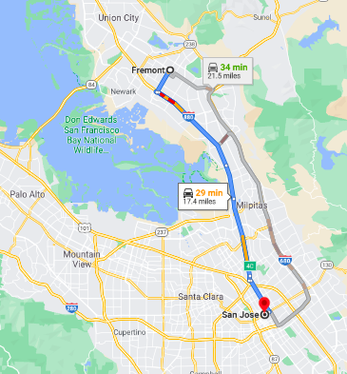 Do you know the way to San Jose? Or why it's America's 5th happiest city? Just a half-hour drive south from Fremont but a world apart in character, San Jose, the unofficial capital of Silicon Valley, rates high in happiness and off-the-charts in terms of wealth. But we all know money doesn't buy happiness, right? What's San Jose doing with all its newfound riches? Surprising things. Learn San Jose's secrets in my next post. Wondering how 182 US cities were chosen and rated for happiness? See the methodology here. YOU MIGHT ALSO ENJOY AND HERE ARE THOSE MOUTHWATERING FILIPINO RECIPES I MENTIONED CLICK HERE to sign up for my weekly travel tips and commentary about life, road trips, and happiness. SHARE this article with family, friends, and anyone who is curious about the road to happiness. https://www.enjoylivingabroad.com/my-blog/what-i-learned-in-americas-happiest-city “You’re not going to believe this,” Rich said. “I just googled the Museum of Local History in Fremont and this is the first photo.” Peering over his shoulder at the screen, I saw an old wooden board studded with small holes. “Hey,” I said, “isn’t that the same board the exterminator photographed under our house to show the beetle infestation? We were researching next week’s road trip to Fremont and San Jose, which ranked first and fifth respectively on the list of America’s happiest cities while being two of the least popular tourist destinations in California, possibly on the planet. As a travel writer, I’m an old hand at digging up fascinating facts about obscure places — want to hear about my six favorite towns in Albania? — but even so, I was floundering. People often ask me how I learn about the weird places we visit. I explain that once potential destinations come to my attention — in this case, by their high ranking on the happiness index and close proximity — I first consult Wikipedia for general background. I soon learned Fremont was formed in the 1950s by five old small towns fearful of being swallowed up by their fast-growing neighbor Hayward. Fremont’s planners preserved landmarks such as Mission San José and silent-era movie lots where Charlie Chaplin got his start, but nobody bothered to create a central downtown. “How do you go there,” Rich complained, “when there’s no there there?” San Jose, as I knew from my childhood, was the hub of a large farming community for centuries. Then by sheer geographic accident — being the only city nearby when the tech explosion hit — it became the unofficial capital of Silicon Valley. Wikipedia informed me the San Jose Metropolitan Area has, per capita, the most millionaires and billionaires in the US and the world’s third highest GDP, not to mention the nation’s most expensive housing market. After that little flurry of discovery, the trail went cold. Even Triposo, the travel app that had guided us through such lesser-known spots as Cagliari, Sardinia and Šiauliai , Lithuania, made no mention of Fremont or San Jose. Amazon listed no guide books. EatWith offered no in-home dining experiences. We were on our own. Luckily, a few stalwart travel writers have visited and published articles such as 12 Top-Rated Attractions & Things to Do in Fremont, featuring lots of nature walks and a few historic buildings, most of which are closed due to Covid. I knew we were in trouble when one of Fremont’s 12 Top-Rated Attractions turned out to be viewing the Dumbarton Bridge. Despite what you see in this heavily photo-shopped image, the bridge is graceless, drab, and as people point out on Trip Advisor, often jammed with traffic and smelling like a sewer. “It’s just a bridge,” commented Bart C. “For goodness sake, I don't know why some of these mundane things are listed as ‘attractions.’” Me neither, Bart! “The Dumbarton Bridge? Seriously?” said Rich. “What’ll we do after that? Tour a Walmart? We don’t have to stay more than one day in Fremont, do we?” “See if there’s any kind of history museum,” I suggested. “People have been in the area since the Ohlone hunted there in 4000 BC; somebody must have collected some old stuff and old stories.” And that’s when we found the Local History Museum in Fremont. At first glance, it looked slightly less glamorous than the Dumbarton Bridge. But then I got to thinking: could artifacts and photos covering the last three centuries of everyday life provide clues about how Fremont became the happiest city in America? The museum is only open a few days a month, and to my astonishment one of them coincides with our visit. What are the odds? That was about it for museums and attractions, so next I googled “diners,” and here Fremont came up aces. Some are family-run slices of Americana that look like the kind of places where the waitress would call you “hon” and freely dispense her views on why Fremont was or wasn’t the happiest town in the US. Many eateries are owned by Asians, who make up 57% of city’s population, and the online photos of mu shu chicken and tikka masala are drool-inducing. Clearly we’ll have to eat at least five meals a day while we’re there. Meanwhile, the San Jose research was proving considerably easier. As I mentioned, there’s no comprehensive guidebook, but if you want to locate the oddball stuff (and I do), there’s the delightful Secret San Jose: A Guide to the Weird, Wonderful and Obscure. It showed where to find Beethoven’s hair (strands were cut off at his death as a memento), a haunted Chuck E. Cheese (the franchise started in San Jose), and a plant converting sewage into perfectly safe drinking water (nope, I’m not going to sample it). I consulted another trusty resource, Meetup, which connects individuals who share an interest, but of course, most were inactive due to Covid. For instance, no upcoming events were listed for the Bay Area Ghost Hunters meetup, “a networking group for the free flow of paranormal information … Skepticism is appreciated, but close-mindedness is not.” When I googled walking tours I found even slimmer pickings, and Rich is flatly refusing to consider the Zombie Scavenger Hunt. In European cities, the cathedral is the center point of any community, so I looked up San Jose’s. Originally a smaller church built in 1803, St. Joseph’s was damaged by earthquakes in 1818 and 1822, was entirely rebuilt, then collapsed during the 1868 earthquake, was entirely rebuilt again, then burned down in 1875. Do you feel God is trying to send a message here? Yes, it’s been rebuilt once more and I may visit, but at the first hint of smoke or trembling underfoot, I’m out of there. The fact is, I don’t have any clear plan for the trip. And that’s a good thing. My research is helpful in pointing me in the direction of interesting stuff, but I’ve learned I get the most fun out of travel by simply showing up, wandering around soaking up atmosphere, chatting with a few random people, and letting events unfold in their own good time. Not having a set schedule, I can linger over sights that interest me — Beethoven’s hair, perhaps, and almost certainly that board in the Local Museum of History (who’d miss a chance to see that?). And I know I’ll spend time perched on diner stools, savoring bottomless cups of coffee and possibly Burmese pan fried dumplings. But no matter how relaxed the pace, I can absolutely guarantee I will not be making time to stand around gazing admiringly at the Dumbarton Bridge. I have my standards! On The Road Again! I won't be writing a post next week as Rich and I will be traveling around trying to figure out why Fremont and San Jose rate so high on the happiness index. I expect to have plenty to say the following week! CLICK HERE to sign up for my weekly travel tips and commentary about life in 2021. SHARE this article with family, friends, and anyone who is curious about America's happiest cities. https://www.enjoylivingabroad.com/my-blog/digging-deep-for-info-on-the-happiest-least-popular-cities YOU MIGHT ALSO ENJOY
these stories about other places nobody ever visits |
This blog is a promotion-free zone.
As my regular readers know, I never get free or discounted goods or services for mentioning anything on this blog (or anywhere else). I only write about things I find interesting and/or useful. I'm an American travel writer living in California and Seville, Spain. I travel the world seeking eccentric people, quirky places, and outrageously delicious food so I can have the fun of writing about them here.
My current project is OUT TO LUNCH IN SAN FRANCISCO. Don't miss out! SIGN UP HERE to be notified when I publish new posts. Planning a trip?
Use the search box below to find out about other places I've written about. Winner of the 2023 Firebird Book Award for Travel
#1 Amazon Bestseller in Tourist Destinations, Travel Tips, Gastronomy Essays, and Senior Travel
BLOG ARCHIVES
July 2024
CATEGORIES
All
|
